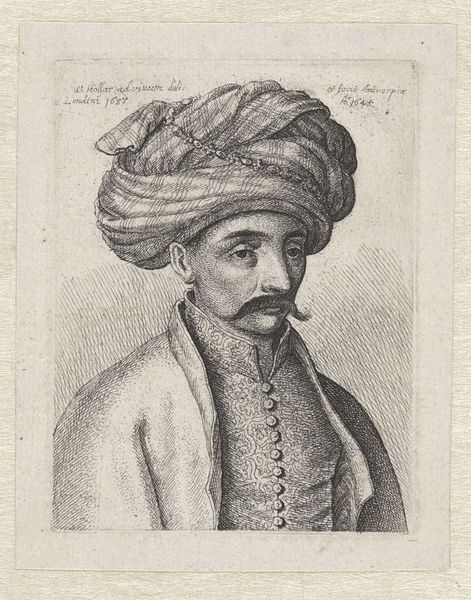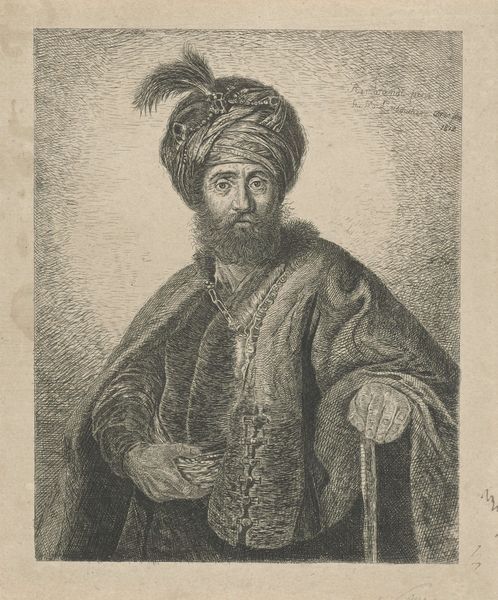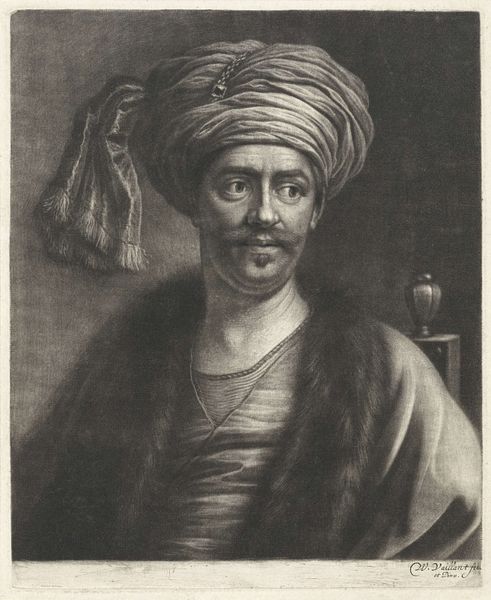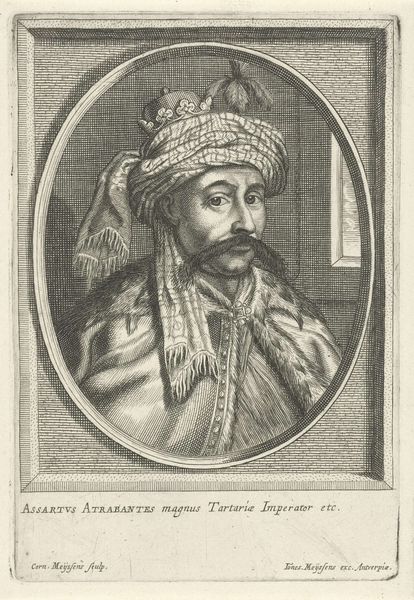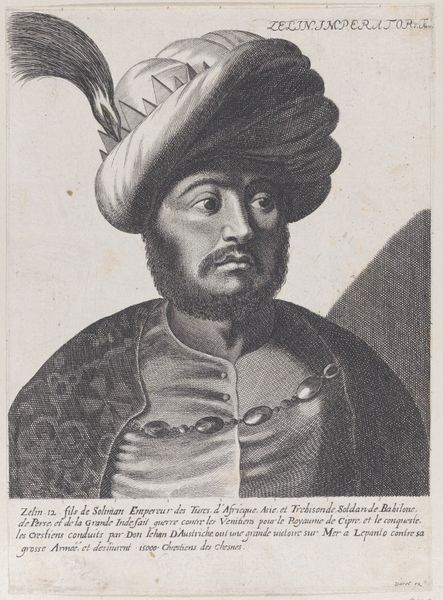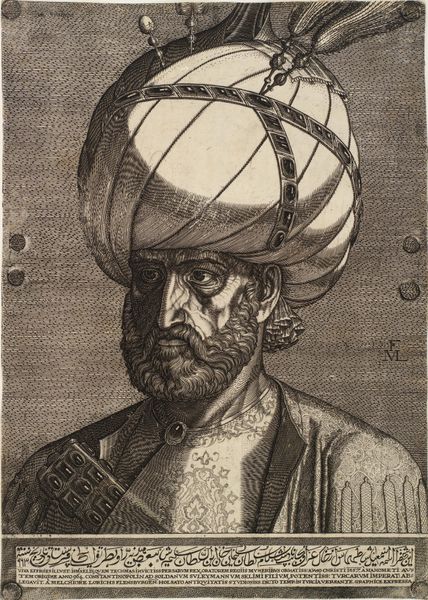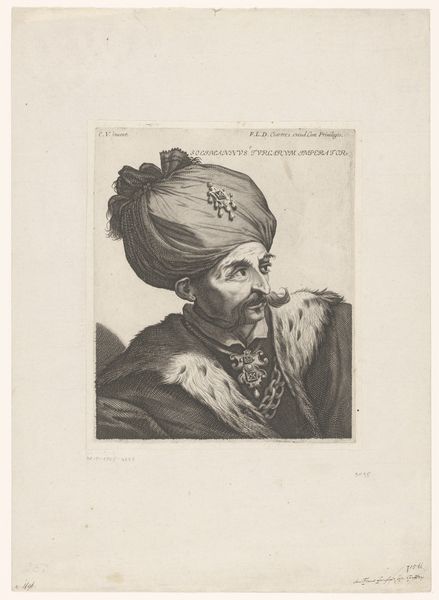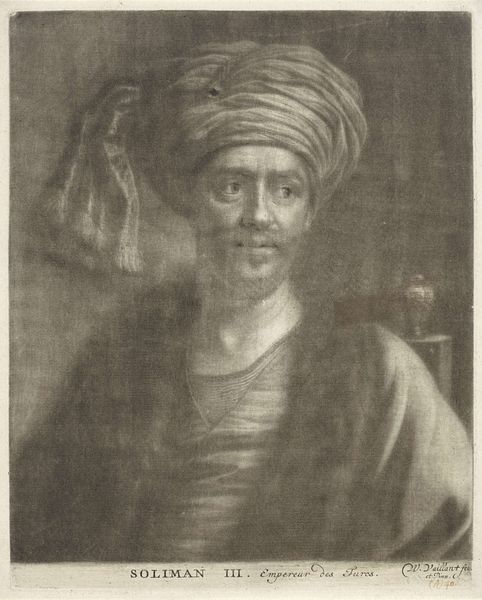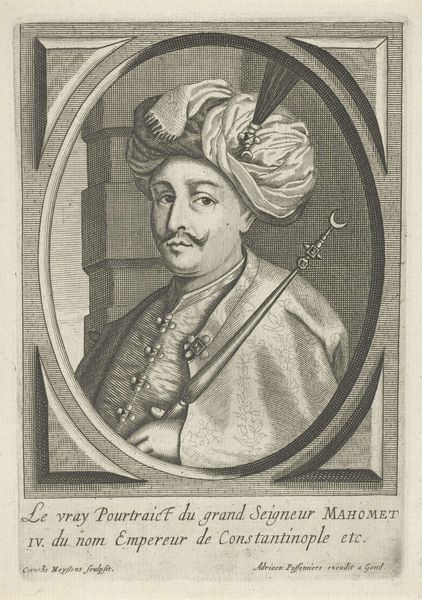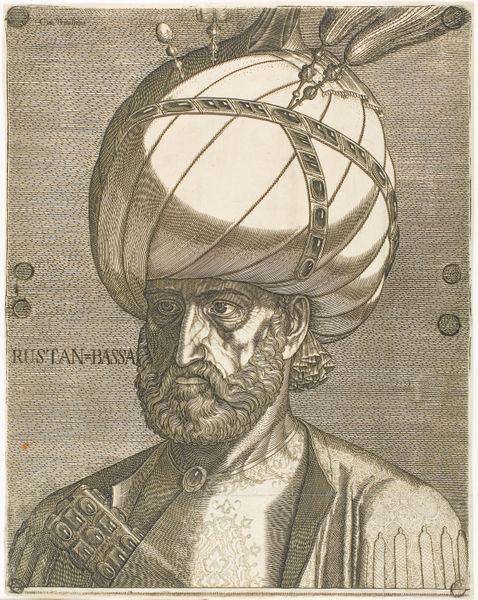
Head and shoulders of a Turkish man, with a moustache and a large turban 1645
0:00
0:00
drawing, print
#
pencil drawn
#
drawing
#
toned paper
#
facial expression drawing
#
light pencil work
# print
#
pencil sketch
#
old engraving style
#
portrait reference
#
pencil drawing
#
men
#
portrait drawing
#
pencil work
Dimensions: Sheet: 3 3/16 × 2 7/16 in. (8.1 × 6.2 cm) cut on platemark
Copyright: Public Domain
Curator: Let's delve into Wenceslaus Hollar's "Head and shoulders of a Turkish man, with a moustache and a large turban," created around 1645. It’s currently housed at the Metropolitan Museum of Art. Editor: This portrait feels incredibly detailed for a print from that era. What's striking to me is the sitter's gaze; there is a blend of dignity and what seems like a subtle defiance. How do you interpret this work, especially considering the historical context? Curator: Hollar, though working within a European artistic tradition, provides a fascinating glimpse into cross-cultural encounters of the 17th century. Consider the term "Turkish" as a broad descriptor then, often applied to anyone from the Ottoman Empire or regions influenced by its culture. The sitter’s clothing isn't just fashion; it's a marker of identity and difference. This image speaks to a Western fascination—and, perhaps, a fear—of the "Orient." How might this portrait play into, or subvert, orientalist tropes? Editor: So, is it less about an individual and more about representing a broader cultural image of the "Other?" I wonder how accurate his portrayal is. Was he truly depicting an individual, or constructing a symbolic representation for a European audience? Curator: Precisely! These images circulated widely and helped shape European perceptions of the Ottoman world. Were these depictions always rooted in reality, or were they constructs designed to reinforce existing power structures? What biases might Hollar have brought to the work, and how do those biases manifest in the details, like the intricate rendering of the turban versus the man's more subdued facial features? Do you see signs of idealization, or perhaps caricature? Editor: I see what you mean. The emphasis on the turban, almost exoticizing it, makes me question how the subject himself would have felt about this representation. It definitely gives a lens to how people viewed Turkish men back then. Curator: It raises vital questions about representation, agency, and the gaze. Thinking about the artwork through that lens certainly complicates a straightforward appreciation of its technical skill, right? Editor: Absolutely! It highlights the complex relationship between art, power, and cultural exchange. Curator: And challenges us to consider whose stories are being told and how, doesn’t it? Editor: This makes me consider my own perspectives and unconscious assumptions, which will certainly improve how I perceive art moving forward!
Comments
No comments
Be the first to comment and join the conversation on the ultimate creative platform.
